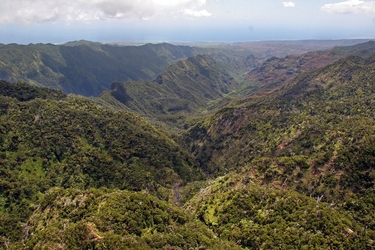Lost and Found
(From the notebook of seasonal technician Patrick Blake)
As field researchers, one of the most important aspects of our job is being the eyes and ears of the project, because the data we collect determines the path the project takes. What happens, then, when that data disappears?
On a recent field trip, the day’s task was to collect ink tracks from over a dozen rat tunnels. The idea is to lure rats with bait placed on a cardboard plate. The bait is placed on an ink blot, and when the rats take the bait, they step onto the ink and leave a trail of footprints on the cardboard. Using this method, we can determine where to place our Goodnature rat traps most effectively.
I was making good progress on this trip, having already collected twelve of the fifteen tracks I had to pick up. But it was slow going, crossing steep ravines and traversing yards of uluhe ferns. As I collected my lucky thirteen track, I discovered that the Ziploc bag I had been storing the collected tracks had vanished, swallowed by the forest!
I spent over an hour retracing my steps (as best I could, thanks to my GPS), but to no avail. The Alaka`i had claimed my collection for itself. However, all was not lost. I had carefully written all of the important data into my notebook (which never leaves my sight), so although the physical tracks were lost, the data they carried was not. Still, a hard lesson learned.
Only a few days later I was back in the same forest, placing new ink tracks at different rat tunnels. After completing the installation at my second tunnel, I noticed a yellow Write in the Rain notebook lying in the woods. It belonged to another of this year’s field crew, and contained at least a week’s worth of detailed observations. So in the space of just one field trip, I had unwittingly lost and found valuable data for the Kaua`i Forest Bird Recovery Project.



